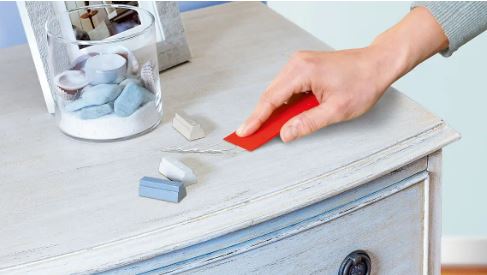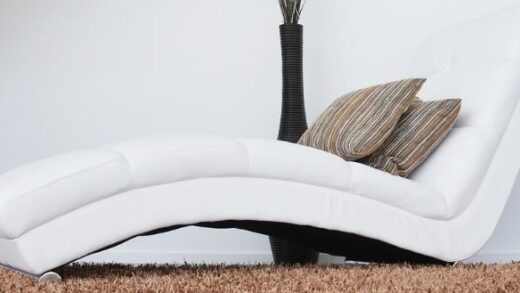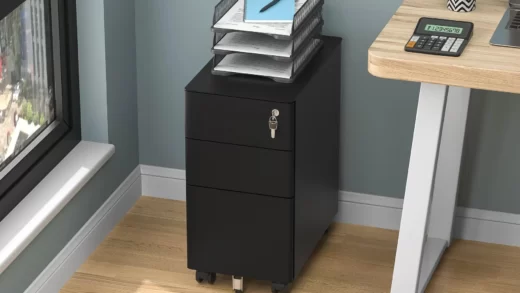If you’ve ever wondered: “Can you put shoes in the dryer?” You’re not the only one.
If you want your shoes to remain fresh for a longer period of time, washing, and drying are crucial.
In this article, you will learn about the types of shoes that can dry, and the correct way put shoes in the dryer.
Table of Contents
What Types of Shoes Can You Dry?
Making use of put shoes in the dryer can greatly simplify your life. It doesn’t take a lot of work, is quick, and effective. If your shoe’s label does indeed state “machine approved,” then stop thinking about it. Here are some materials that are generally machine safe because we sometimes aren’t as fortunate to have this.
Canvas
The majority of the time, canvas shoes are secure. Most resembling tents or sails is the rough cloth-like substance. Typically, they have a rubber sole and metal or plastic holes for the laces to wind in and out of. The converse is the ideal example of a shoe made of canvas and is machine-safe. Consider the general bending of high-tops. Because of the shoe’s inherent flexibility, we need not worry about it warping.
Cotton
Reebok’s organic cotton and corn shoes, which were released in August 2018, are an example of how sustainability is gaining ground. Since cotton is a common fabric for our shirts and is easily dried, shoes made of this material are a good choice. Cotton does shrink, so it’s important to stuff your shoes to prevent this if there is one thing to watch out for.
Polyester/Nylon
Additionally, nylons and polyesters are the materials you can put shoes in the dryer. These blends are common in running shoes because of the material’s flexibility. Nowadays, nylon is used more as a cross-blend to increase comfort because it isn’t as popular as polyester or cotton. A lower temperature is necessary if your product contains nylon because some nylons melt easily. While polyester dries quickly, it has a tendency to shrink at higher temperatures.
What Materials You Cannot Put Shoes in the Dryer?
How many times have we forgotten to follow washing instructions and regretted it later? On the other hand, there have been a few occasions when my belongings turned out OK, so rather than taking the time to hand wash and hand dry the valuables, I frequently gambled and did things incorrectly.
What we fail to realize is that the first time we do something, we might not understand the rationale behind why we shouldn’t treat the object in a particular way. Who cares if my shoes shrink a little? They will simply be stretched out repeatedly by me. Well, I discovered that as time goes on, the materials start to break down. I want to go over what we can and cannot put in the dryer, along with the rationale for each decision.
It’s possible that suede shoe care dates back even further than the 1950s. There’s a good reason why Presley, Perkins, and other musicians sing about the iconic looks and why it would be disastrous to ruin them. In actuality, your shoes are wet and made of suede, so you should take immediate care of them.
The suede stiffens when it is wet and then dries. It can easily break off, permanently damaging your shoes, if you put shoes in the dryer. The suede, on the other hand, can warp and crack if you use heat to dry your shoes. In the shade, air drying is advised.
Leather
Leather and heat should never be put shoes in the dryer. As the materials relax and stretch in heat, the leather may also warp when it gets hot. You can anticipate wrinkles, creases, indents, and more if your leather shoes are bouncing around and losing their shape in the dryer. The leather will already have a new shape when it is fully dried. And on top of that, it’s possible for the dye in some leather shoes to bleed in very hot temperatures.
Gel/Foam?
These days, many sneakers come with foam or gel soles to increase comfort. When these materials are exposed to heat, you no longer feel as comfortable, whether it be more cushioning or a spring in your step.
Foam soles may easily separate in the dryer, depending on the heat setting you use. If you allow your shoe to bang around in the drum, the glue holding the sole will begin to separate.
On the other hand, it is simple to understand that gel, when it becomes overheated, may melt and dry in a warped manner. Given that we depend on particular types of soles for comfort in running shoes or sneakers, this is obviously harmful to them. The gel may harden and lose its springiness due to heat, making it uncomfortable to walk on.
Sequins/Sparkles/Delicates
This one can sneak up on us, but it makes a lot of sense when we put shoes in the dryer. Simply put, if your shoes are made of shiny materials like sequins, lace, or other intricate details, they will fall off.
That is what first distinguishes the shoe as unique. It will be destroyed if you put it in a dryer with strong air and the potential to bang around a little. Instead, think about drying by air.
Although there is a chance that you could harm your dryer, if your shoes weren’t designed for machine drying, you would probably have more trouble with them being ruined. The entire purpose of drying your shoes is defeated if you can’t wear them the following day. Therefore, take care of them by keeping an eye out for these items.

How To Put Shoes in the Dry Correctly?
Here are five ways to put shoes in the dryer correctly as follows.
1. Check the Manufacturer’s Recommendations
The majority of shoes have a label inside that tells you how to take care of them. Typically, the same label contains information on sizing, materials, as well as the location of the shoes’ production. The best practices for caring for your shoes can be found in those cleaning instructions.
These symbols indicate whether you can bleach or wash your shoes and how to dry them. The labels are frequently small and don’t provide full explanations. There is a thorough guide available here if you are not familiar with the symbols.
Remember that some producers won’t provide that information at all. The best course of action in those circumstances is to hand wash and air dries the shoe.
What can be placed in a dryer is described in more detail below.
2. Understand How Different Materials Respond to the Drying Process
As the information introduce above, three types of shoes and others are listed, which can be put in the dryer, or others are not allowed to be put in the dryer.
3. Take into Account What’s Best for the Dryer
You shouldn’t disregard the dryer’s best practices just because you’re drying your shoes in it. Your favorite shoes might become damaged if this step is done incorrectly.
First things first: never put shoes in the dryer. Always make sure they are clean. You should be able to use this straightforward guide to your advantage.
Ideally, before putting your shoes in the dryer, drain any extra water to make sure they aren’t dripping wet. To help the machine operate more effectively, check and clean the lint filter. Finally, make sure you are using low heat and that you are following the label’s instructions.
4. Don’t Let the Shoes Bang Around in the Dryer
Allowing shoes to bounce around inside the dryer can harm both the shoes and the appliance. To stop them from crashing around, throw large towels inside. To prevent the shoes from shrinking as they dry, you can also stuff them with specific materials and fabrics (like smaller towels).
Another choice is to put shoes in the dryer. Tie the two together, then pass them through the dryer door. In order to avoid problems while they dry, make sure your shoes are not normally laced up. Use a single hole on each shoe after first unlacing them.
After shutting the door, leave the laces dangling from the dryer. Make sure the shoes are hanging freely from the door and not touching the sides. Because it works more quickly, this hanging technique is preferable to using towels to dry shoes in the dryer.
5. Choose the Right Settings
To avoid using excessive heat, set your machine to the Air Dry setting. If it’s the only setting available, you can use it.
Make sure you are regularly monitoring the progress by pausing the cycle and feeling the inside of the shoes to see if they are dry. If you believe they are almost finished, you can add additional five-minute intervals.
What Are the Alternatives to Put Shoes in the Dryer?
You can also let your shoes air dry if you don’t want to dry them in the dryer. They can be dried on a drying rack in direct sunlight or hung by their laces in a shaded, well-ventilated area.
To help absorb moisture, you could also place newspaper inside the shoes and replace it every two hours. If none of those solutions work, you can put shoes in the dryer and cover them while letting them sit for a few hours. Check out this useful guide on accelerating the drying process.
What Are Potential Damage to the Dryer?
For the protection of both the shoes and your dryer, shoes without laces should never be dried in a dryer. Numerous items, including your shoes and the walls inside your dryer, can sustain damage over time.
Your machine won’t necessarily break down the first time they use it, though. Ideally, your dryer will last a little longer than that. However, the more banging you do, the more likely you are to dent the walls, break the motor, the drum belt, etc.
Ideally, before throwing your shoes in, you double-check to make sure they are empty. Particularly if you went hiking, as things like sizable clumps of rock, dirt, or leaves can make their way inside.
The cylinder could fall off the pulley and burn out if there was even one rock that got into the rim. And if that’s the kind of washer you have, you definitely don’t want a rock to shatter the front glass.
In this case, it’s more likely that your shoelaces will put shoes in the dryer. That is if you don’t hang your shoes up correctly as instructed. Another issue is that the drum may get dented if your shoes are flying around inside. Sounds like not a big deal?
Well, the likelihood that the cylinder will start to bump into other components of the machine inside increases with its degree of warpage, which could lead to severe internal damage.
The problem with drying machines is that, in most cases, if one component isn’t working, the whole thing can’t work. And even if it does work, it probably won’t last long because internal friction wears out any components that are trying to function. Simply taking the time to do something correctly is easier than taking a chance at a costly error.
Now, do you grasp the types and ways to put shoes in the dryer?



